C.L. Wilson's Blog, page 11
December 16, 2013
Guest Author Erica Ridley Chats about ONE ENCHANTED SEASON
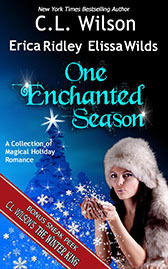
When the possibility of my friends and I doing a themed Christmas anthology came up a few years back (as Elissa said, the accidental penthouse was gorgeous and the wine was flowing…) I immediately was all in. I love the holidays, I adore my anthology-mates, and I am a huuuge sucker for theming of any kind. Sock hop? Zombie run? Steampunk bachelorette party? I AM SO THERE.
 My only problem was whittling down the options. A favorite Christmas carol? I have twenty! I sent around so many “Maybe I’ll write about THIS!” email ideas that nobody had any idea what direction my story might take, least of all me. Historical? Futuristic? Contemporary? Alternate universe???
My only problem was whittling down the options. A favorite Christmas carol? I have twenty! I sent around so many “Maybe I’ll write about THIS!” email ideas that nobody had any idea what direction my story might take, least of all me. Historical? Futuristic? Contemporary? Alternate universe???In the end, the answer was stunningly clear: Nobody puts Baby in a corner! (Or Erica in a genre box!) I could only choose D: All of the Above, final answer. The carol was Let It Snow, and snow it has . . . for six hundred years. The heroine? Positively medieval—and doomed to relive Christmas day after day for the rest of her life. The hero? A swashbuckling adventurer with a bounty on his head and an addiction to Candy Crush: Warlock Edition.
She’s from the past. He’s from the alternate future. And they’re both trapped inside an inescapable castle made of solid ice. To make matters worse, only the cursed princess will live to repeat Christmas all over again. As to the intrepid explorer? When the bells toll midnight, the snow will tumble down and the evergreen in the parlor will have one more figurine hanging from its boughs . . .
Tell me: If you were doomed to repeat the same day for the rest of your life, which day would you choose, and why?
Three lucky commenters will win free e-books of Charmed and Midwinter Magic, the first two books in the Nether-Netherland fantasy romance series.
Erica Ridley learned to read when she was three, which was about the same time she decided to be a writer when she grew up.
She is the author of two Gothic romances, Too Wicked to Kiss and Too Sinful to Deny, the vampire romance “Never Been Bitten” in the paranormal romance anthology Born To Bite, contemporary paranormal romances Charmed and Midwinter Magic, and the holiday romance Let It Snow.
When not reading or writing romances, Erica can be found riding camels in Africa, zip-lining through rainforests in Costa Rica, or getting hopelessly lost in the middle of Budapest.
For freebies & new release info, sign up at: http://bit.ly/EricaRidleyVIPs
December 14, 2013
Guest Author Elissa Wilds’ Blog Winner Announced
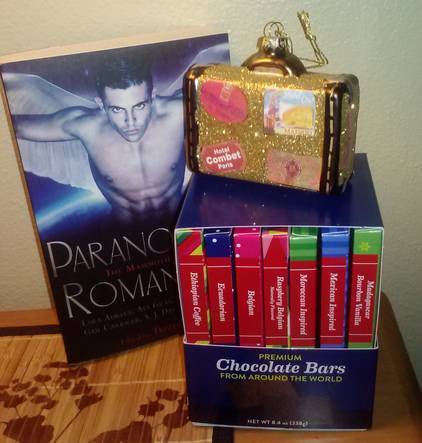
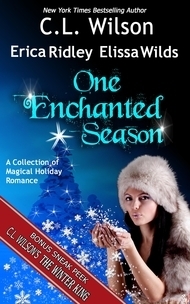
Thanks to everyone who participated in the blog with Elissa Wilds yesterday.
Elissa’s son drew the winning name from the bowl, and the winner is: Phyllis Towzey. Congrats Phyllis! Elissa will be contacting you shortly to get your mailing address.
Please join us next Monday when guest author Erica Ridley will be blogging about her inspiration for Let It Snow in our magical holiday romance anthology, ONE ENCHANTED SEASON.
Happy holidays! Have a magical weekend!
December 13, 2013
Guest Author Elissa Wilds Chats About ONE ENCHANTED SEASON
Please help me welcome my dear friend, Elissa Wilds, author of the novella Snowman in of ONE ENCHANTED SEASON, our anthology of magical holiday romance, available now in ebook (print copy coming soon).

This is the story of how unfashionable lateness led to publication of a romance novel.
A couple years ago, despite all my good intentions, I was very, very late to arrive at a writer’s conference. When I finally made it, frazzled and cranky, and rehearsing my apology to my roommate, the hotel desk clerk handed me my room key and told me that I was one lucky girl. I was being given the best room in the hotel for the same rate as a regular room. Why? Because, like me, my roommate had also been running late and had arrived shortly before I did. The hotel had promised us a room with an ocean view and, by the time either of us had arrived at the hotel, they’d inadvertently filled them all except for one. You guessed it. The penthouse. As you can imagine, I was quite delighted by this turn of events – as was my roommate. Ahem! (Yes, my roommate was C.L. Wilson)
I discovered there are many benefits to staying in the penthouse – beautiful view, lots of space, privacy, and more beds and bathrooms then two women could possibly use. But by far the best perk was that our room became the party room. We made a point of inviting as many folks as possible to our evening soirees in the penthouse. It was, as you can imagine, great fun!

At our final party, we were hanging with some writer friends, sipping wine, rehashing the conference, and talking about the upcoming holidays. That’s when the idea for One Enchanted Season was born. We decided we’d each pick a holiday song to inspire a paranormal holiday romance. Everyone started spouting out songs and weighing options. I might have even sung a jingle or two (it was the wine, you see). If it hadn’t been for tardiness, we wouldn’t have been given the penthouse, the party wouldn’t have happened, and One Enchanted Season wouldn’t exist. Yup, in this case, lateness paid off – in more ways than one.
My favorite holiday movie as a kid was Frosty the Snowman. I grew up in Wisconsin where I’d build snowmen in the winter with my eight brothers and sisters and those snowman were never complete without a face and a hat. I would imagine my snowman coming to life just like Frosty did. It was definitely the song I wanted to work with. Having chosen my song, I went about creating my hero. I considered all the usual paranormal suspects – gods, vampires, faeries, shifters, etc, but none of them seemed to fit the bill just right. My Snowman needed to be a little different. He needed to arrive in the winter, for sure. He needed to have the characteristics of winter itself – pale, cool skin? Check. Ice-blue eyes and hair almost as fair as snow? Check. A heart ready for a thaw? Ah, yes! Check! The “snowman” in my book isn’t actually made of snow, but he does bring magic to my heroine, and just like those children in Frosty the Snowman, once she meets him, her world is forever changed.
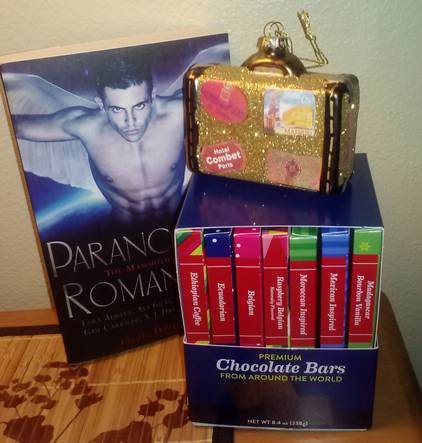
Speaking of worlds, one of the things I adore most about paranormal/fantasy romances is that you get to explore new, magical worlds. If you were given a special gift this year of an all expenses paid trip to the fictional destination of your choice – where would you go? Me? I’d visit Hogwart’s School of Witchcraft and Wizardry of Harry Potter fame. I would love to explore those secret passages and shifting staircases!! Okay, your turn!!
P.S. In the spirit of “world exploration,” one lucky commenter today will receive this adorable sparkly “suitcase” holiday ornament, a collection of chocolate bars from “around the world” and a signed copy of The Mammoth Book of Paranormal Romance 2 – a collection of paranormal romance stories chock full of exciting and unique paranormal worlds.
Happy holidays!
Elissa
Elissa Wilds is multi-published in paranormal romance by Dorchester Publishing, Running Press, and Montlake Publishing. Her work has received rave reviews and has garnered a number of awards including placement in the prestigious 2009 Published Maggie Award of Excellence Contest and the Grand Prize win in the 2010 Laurie’s Best Published Contest. You can find her online at http://elissawilds.com
December 7, 2013
Enjoy Magical Holiday Romance with C.L. Wilson in ONE ENCHANTED SEASON! Available now!
 Step into a world where the nights are long, snowflakes sparkle like fairy lights, and the hearth fires burn as brightly as the passion of new-found love as three bestselling and critically acclaimed authors of paranormal romance weave stories inspired by classic holiday songs.
Step into a world where the nights are long, snowflakes sparkle like fairy lights, and the hearth fires burn as brightly as the passion of new-found love as three bestselling and critically acclaimed authors of paranormal romance weave stories inspired by classic holiday songs.
In C.L. Wilson’s Upon a Midnight, an angel helps a troubled woman heal the wounds of her past so her soul can relearn how to sing.
Erica Ridley delivers magic with Let It Snow, in which a treasure hunter breaches an enchanted castle only to become trapped inside with a cursed princess and a suspicious tree.
And in Snowman, Elissa Wilds weaves a tale of love that bridges two very different worlds, when a snowy stranger appears at an isolated mountain cabin seeking much more than a shelter from the storm.
ONE ENCHANTED SEASON is an anthology of magical holiday novellas written by me and two dear friends, Elissa Wilds and Erica Ridley. This project is something we dreamed up at a writer’s weekend a couple of years ago, and I’m super excited about it. Erica’s contribution is hilarious and touching and just a delight to read. Elissa’s (who is like my spiritual soul-sister, we think so alike in so many things) is sexy and mystical, and will hopefully be the first of many stories about the keepers of the Crystal Skulls
Besides providing me the pleasure of working with two wonderful friends whom I adore, this book also marks three significant firsts for me:
It’s my very first published contemporary romance (and, boy, did I have fun writing it!),
It’s my very first published novella (and, wordy me, I pushed right up to the maximum wordcount allowed before my story ceased being a novella and became an actual novel), and
It’s my very first foray into self-publishing, something I’ve been wanting to try ever since ereaders and ereader apps became readily available. The book is currently available in digital only but we’re working to make a print copy available as soon as possible.
I hope you’ll give the book a try, and please let me know what you think! (I have a not-so-secret crush on my angel, Micah, who, as one of the characters in the story proclaims, is “Manly with a capital Mrowr!”)
As a bonus feature, ONE ENCHANTED SEASON includes the first published excerpt of my upcoming full-length novel, THE WINTER KING (coming Aug 2014 from Avon Romance).
Check Out the Kitlings!
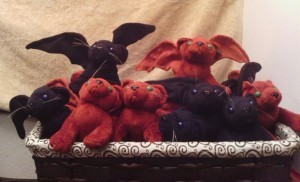
And if you’re wondering what to get that special someone-who-has-everything, check out the latest from the Tairen’s Lair (www.tairenslair.com). Last year, we offered a very limited production of Hallah kitling. Now Rainier-Eras and Ellysetta-Azreisa join the pride. New prints and great sales on on mugs, shirts and plaques also available.
November 2, 2013
Worldbuilding 101 – Warfare and Technology
Warfare and technology plays a role in any society and any world you will create. Whether you are writing about pre-industrial “Middle Earth” type worlds or laser-gun equipped futuristic societies in galaxies far, far away, your societies will typically have some form of technology and weaponry. How much warfare comes into play in your story is a variable you can certainly control, but the level of technology available is a vital component of any society and a required component of any successful attempt to set readers firmly in your world.
Technology and Warfare go hand in glove. They are so closely related, in fact, that they have a symbiotic, chicken-and-egg sort of relationship. Which came first, warfare or technology?
Have you ever played Age of Empires from Microsoft? It’s a fascinating, high-level overview of the development of technology and warfare and societies. When you play the game, the first societies available are hunter-gatherers. The first soldiers you can create run around with big wooden clubs which they use to bash their enemies.
Technically, if you think about it, the first weapons available to mankind were hands, teeth and muscles. Then came bashing tools such as rocks and clubs. Then cutting tools, starting with branches that could be shaved to a point, rocks that could be shaped into sharp-edged tools such as hand axes and scrapers. Then came the discovery and control of fire. The airborne missiles such as spears and arrows that could deal a grievous wound while allowing the user to maintain a safe distance from his target. Then metal.
Warfare drives many a technological invention and many a technology drives advances in weaponry.
Here is an approximated partial anthropological timeline of key technological advancement on earth from dawn of time until the early 1800’s.
Early tools. Hand axe, scrapers, wooden spears (2.5 million bce)
Discovery and utilization of fire, which was used for both food and improvement of weaponry (1 million – 400,000 bce)
Development of clothing and shelter
Flint tools, bone tools (250,000 bce)
Advancement of fire usage. Furnace and bellows.
Metallurgy, smelting and forging of metals such as gold, copper, silver and lead. Copper age of weaponry. (8000 bce)
Development of metal swords, knives, axes
Irrigation (7000 bce)
Development of the wheel (6000-4000 bce)
Wheel and axle combination (5000 bce)
Development of alloys – bronze and brass (4000 bce) Bronze Age.
Writing (3500 bce)
Development and use of sails for boats and ships (3500 bce)
Chariot (2600 bce)
Development of iron alloys – steel (2500-1500 bce) Iron age.
Currency (2000 bce)
Simple machines (level, screw, pulley) (300-200 bce)
Discovery of gunpowder (800 AD)
Forceps, Scalpel, Surgical needle, Suture thread (1000 ad)
Rifled musket barrels (1400 ad)
Steam engine (1698 ad)
Steam locomotive (1814 ad)
Revolver (1835 ad)
Steel plow (1837 ad)
For a complete list, take a look at Wikipedia. One of the bits I find most interesting is the pace at which different cultures advance. Just because one culture is advanced, does not mean another (even neighboring) culture shares the same level of advancement. You can use this variance in technology and weaponry to great effect in any novel as a source of conflict.
Technology
Start by thinking how technologically advanced your society is. Many people use historical earth societies as a basis for a fantasy world’s development? Why? For two reasons: (1) it gives you a starting point you can research, with instant credibility, and (2) it provides immediate “accessibility” to the reader. Whether we remember it or not, most of us have had exposure to historical earth cultures through World History classes and such in school. That provides readers with a built-in sense of “realism” they can connect to.
Remember, the level of technology needs to be commensurate with the other aspects of your culture. Hunter-gatherers, for instance, would probably not have internal combustion engines. Medieval knights would not have light sabers.
Consider travel technology – how do people get around? How do they transport goods? Horse and wagon? Donkey pack trains? Locomotive? Ground-skimming hovercrafts?
Consider machines – what types and what is the availability of machinery? And if they have machines, what powers them? A windmill is a machine powered by wind. Historical uses for windmills include milling grain, powering well pumps, etc.
Consider technology used by common man – the printing press changed the world. How are homes plumbed? Is there running water? Are there toilet and bathing facilities? What sort of cookstoves are used in a house? What sort of communications technologies are available?
Other types of technology to consider: industrial technology, medical technology, manufacturing capabilities, etc.
Whatever level of technology you choose, make sure you are consistent within that culture.
Warfare
The more advanced a society’s technology, the more advance their war-making capabilities. The type and complexity of available weaponry depends entirely upon the resources and technologies available to make those weapons.
Pre-industrial weaponry includes swords, arrows, slingshots, spears, axes, crossbows. Catapults, battering rams, and trebuchets (an advanced form of catapult) are also possible. The ability to add some sort of incendiary device (fire arrows, burning “mortars” delivered by the catapults, etc.) adds damage to these weapons, and therefore makes them more effective target. Also consider other possible weapons, such as boiling oil to pour down upon the heads of attacking armies, avalanches (wood or stone) to close a pass and crush an army, etc. You can get very creative with pre-industrial weaponry.
With the advent of gunpowder came even more damaging weapons: guns, exploding mortars, rockets, etc. Gunpowder was a huge advantage to societies that possessed and knew how to use it.
Among some of the first guns were muskets, the barrels unrifled, which typically mean the accuracy of the shooter was hampered. Rifling the inside of gun barrels provided for a truer, straighter trajectory of the fired missile (bullet). The next significant advance after rifling was repeating shot weapons, which cut down on reload time and made shooters more effective. After repeating shot came semi-automatic and automatic weapons, etc.
Beyond the type and availability of weaponry, also consider military strategies and tactics. What types of “troops” are available in your country’s armies? Calvalry? Infantry? Archers? Navy? What tactics do they use? You can look to widely available historical sources for all manner of ideas. I love to read up on Greek and Roman battle strategies, and the tactics of Alexander the Great are still studied today for military relevance. Be creative, but also avail yourself of the vast array of detailed historical military studies for ideas and suggestions on how to create believable military forces, conflicts and campaigns.
And remember, don’t only consider weaponry and military tactics. One of the reasons the Roman army was so effective a conquering force was the well-maintained condition of the roads which allowed that army to travel very far, very fast (for their time). Logistics are hugely important for all armed forces. If you cut off the supply of troops, food, or weapons & ammunition, you severely hamper the effectiveness of the fighting force.
The next article in this series is going to be about building credible Magical systems for use in fantasy novels.
October 7, 2013
Worldbuilding 101 – Government, Industry, Agriculture and Trade
In our previous exercises, we created out planet, resources, peoples and societies…now we need to build the engines that keep food in the belly, clothes on the back, and provide some semblance of order and leadership in our world. That brings us to government, industry, agriculture and trade.
Agriculture – Let’s start with the very basic foundation: food. Every creature needs sustenance. The food must come from somewhere. If your society is a nomadic race of hunters and gatherers, the bulk of their time and lifestyle will be built entirely around the locating and harvesting (through hunting and/or gathering) of food. Anthropologically speaking, hunter/gatherers are among the most primitive of societies. Cultivation of food is higher on the technology scale and agricultural societies are subsequently more fixed rather than nomadic to provide time for the planting, cultivation, and harvesting of crops. Domestication of livestock should also be considered.
If the characters in your novel are going to interact on any level with farmers or ranchers you should have some idea of what plants they farmers cultivate, what animals they raise, where the farms and ranches are located, what degree of technology they have. How big their farms or ranches are. (Incidentally, the Acre which is a long-standing two-dimensional plot of land was devised as being the average amount of land a farmer behind an ox-pulled plow could plow in a single day.) If you have farmers and ranchers, you need to consider water supply and terrain. Mountains can be terraced for farming.
Even if on-page interaction with farmers and ranchers will not take place in your novel, you still need to determine what the peoples of your world eat and drink, how the food is prepared, rituals associated with the preparation or consumption of food, food taboos (if any, such as the jewish taboo against meat and milk products being served together), etc. Don’t forget to consider what effects certain foods may have on the people who eat them, and remember that for all the healthy foodstuffs that may be available, there are also likely alcohols, stimulants and poisons to be found as well.
Keep in mind: Food is a sensory experience. Smells, tastes, visual displays (presentation) all come into play, and you can use those experiences on-page to illustrate all manner of cultural and personal information. Think of two lovers sharing long, slow bites of succulent cherries, prisoners partaking of their last meal, a Spartan soldier eating raw meat from a fresh kill, Roman nobility gorging themselves on food, wine and decadence.
Government – The human race settles itself naturally into social order, and leadership becomes established at a relatively early date on the timeline of civilization. From tribal chiefs and councils of elders to high priests to nobility and kings to elected officials, most cultures must, in order to survive, form, support, and submit to some form of government. Depending on the type of societies you have created, you may have any number of government or leadership roles.
Leadership by Right of Combat. This is one of the simplest and earliest forms of leadership. The alpha male. Leadership is won through challenge and combat. Leaders who age or are injured are challenged and replaced (or killed, as was often the case). In highly-contentious societies with great numbers of enemies, the War Chief will often become the leader of the society, simply because effective military leadership is essential for survival.
Religious Leadership. This includes Popes / High Priests / Priestesses / Shamans. Typically religious leaders work in conjunction with a more secular (though often “divinely appointed”) leader such as a king or tribal leader; however, depending on your society the religious leader may be instrumental in governing the society. Decide how powerful your religious leaders are and what influence they hold over daily life, decisions of state, and the rulers of your society.
Council of Elders. In many societies, age is equated with wisdom and tribes are governed by assemblies of elderly men (and sometimes women) who pool their collective experiences to guide the younger members of their society. In such societies, elderly members of the society are typically revered for their age, not reviled for it, and the society encourages open care of devotion for its aged members. Families are extended to include elderly members. This does not, suggest, however, that younger members of the society always accept the wisdom of their elders without contention. Nor does it imply that the Elders are always right!
Feudalism. In a Feudal society, the nobles reign supreme. Feudal societies typically are ruled by a king and a heirarchy of nobles who have sworn fealty to him. Each noble may also have other, lesser nobles, whom have sworn fealty to them as well. The king typically rules by birthright. Serving him are a collective of nobles, who may have earned their titles and stewardship of self-supporting estates (typically agrictulturally-driven estates) through service to the crown. In return, as a vassal of the king, the nobles offer a proscribed number of “knights fees” or months of soldiers’ service to the king on an annual basis, gathering taxes for the king, and dispensing the kings justice on their etates. It is not uncommon, however, for the nobility to rule as kings on their own estates, dispensing justice and governing as they see fit.
Absolute Monarchy. In an absolute monarchy, the king reigns supreme. No law and no body of people (noble or otherwise) may oppose him. Typically in an absolute monarchy, the king is thought to possess his kingship through Divine Right (i.e., the will of God). Even in absolute monarchies, however, most kings have inner councils of advisors to help him make wise, well-informed decision
Constitutional Monarchy. In this, the most modern, form of monarchy, the king is essentially a figurehead. Real power rests with an elected body of officials (the Parliament, for instance).
Democracy. In a true democracy, all governance is performed through majority vote. Beyond a small tribal collective, pure democracy quickly becomes unweildy and anarchistic, not to mention terribly unfair for the unlucky sods in the minority (who lose every vote). In a true democracy, if John was a miner who found and mined a fortune in gold, his less fortunate fellows could gather together and vote to take John’s gold and divide it amongst themselves. And John would have no way to stop them. Pure democracy, which sounds so nice on the surface, is really mob rule. If your character finds himself wandering into a pure democracy, he’d better hope he’s got the mob on his side!
Democratic Republic (aka, Representative Democracy). A democratic republic, or representative democracy, is the type of government we currently have in the United States. The people elect representatives to governmental councils called congresses (town councils, county boards, state congresses, national congresses). As part of this election, the electorate empowers the elected official to introduce, develop and vote on legislation on their behalf.
While you’re deciding on the type of government your society has in place, also consider the benefits and perils of how the succession is decided. In monarchies, rule is passed by birthright. The eldest son of the current ruler becomes king after his father’s death. Can women rule? What happens if the king dies without issue? What if the inheriting son or daughter is not up to the task of leadership? What if they are still a child when the king dies? Is there a regency? Is it a single person? Are successions peaceful or times of great tension and upheaval?
Do not forget how the governments support themselves (taxation, goods and services donated by the governed, etc.). Also do not forget how the government establishes and maintains law and order.
Industry – Next comes industry. What goods do your peoples make? How advanced is their civilization? Are they pre-industrial? Do they manufacture machines made of metal, have automation?
Is each individual self-sufficient, or do members of your society specialize in particular crafts or industries? Types of crafts / industries can include metal workers, glass blowers, carpenters, woodcutters, tool makers, furniture manufacturers, shipbuilders, sail makers, buggy / carriage makers. The list is virtually endless. If you need a little help fleshing out types of industry to create, consider lookin up the Standard Industrial Classification codes (SIC codes) used to classify companies in the US. You’ll get all manner of ideas.
Don’t forget all the industries involved in the production of items. For instance, if your world uses metal swords, the metal ores must be mined and smelted before the swords can be made.
As part of early craftsmanship often comes the establishment of Guilds which are used to train and “license” individuals in the production of quality goods. Guilds are usually industry-specific. A woodcarver’s guild, for instance, would have different members and rules than a blacksmith’s guild. What are the stages of apprentiship and mastery in the guild? Apprentice, Journeyman, Master is a common, three step process of training, but you may choose to make up your own stages.
Trade – Last but not least, you must consider trade. How are the foods and fruits of industry and agriculture disseminated amongst your populations (or between cultures, for that matter)?
Distribution is key to any productive form of industry. What goods you harvest or manufacture must be taken to a market of some sort. Are there trade routes (land, sea, river, etc.)? How well established are they? What are the perils of those trade routes (piracy, highwaymen, etc.)?What goods does one society manufacture that are most desirable to other societies? What is traded in return? How fair is the trade – and might certain societies attack another to capture their valuable resources?
What types of people are your merchants? Honest men, or sly hucksters selling snake oil remedies? (Note: merchants who offer exotic goods for sale are usually far wealthier than the individuals who produced or delivered those goods.) How are tradesmen paid? What must they do to defend their trade routes and markets?
These are just a few of the many questions you can ask yourself when fleshing out these aspects of your society. Where possible, consider each decision you make with an eye for how it can affect your plot or your characters.
Happy Worldbuilding! In the next article, we’ll talk about Warfare and Technology in your societies.
September 14, 2013
Worldbuilding 101 – Structuring Your Society
So you’ve decided some basic physical and genetic basics about your races. And you’ve decided some broad cultural and societal brushstrokes such as core values of the society (and what the society will do to protect them), where and how the members of the society live, how they interact with other cultures, what their religious beliefs are, and the basics of how the society educates its members.
Now lets flesh out the social structure – the classes (or sub societies) within the culture.
You will be drawing upon most of what you’ve decided previously to do this exercise.
Class system. Is there is class system and how stratified is it? Most societies automatically segregate into classes. At a minimum, there are typically low, middle and upper classes in any society. You can break this down even further: slave, peasant, craftsman, merchant, professional, cleric, noble, king. And often there are sub-strata within each class.
In some societies (such as India) a very stratified “class” system – called caste – exists. Under the caste system, you are born into your caste and can never leave it. People do not marry outside their caste. Social order, friendships, jobs and professions are all determined by your caste.
What are the classes in your society? How are they established? Can individuals move between classes – and if so, are there limits to how high (or low) they can move? What sorts of obstacles are they likely to encounter?
Typically, the lower the class, the poorer the education and the more menial the tasks the members of a particular class are expected to perform.
Value of Life. What value does your society put on life in general? Are lives valued, or are people considered expendable? In ancient Roman times, for instance, the gladiatorial combats slaughtered people for sport. In societies where conditions are harsh and survival is a struggle, death would typically be greeted with practicality. There might be some weeping, of course, over the death of a loved one, but members of the tribe would typically accept and move on.
In some cultures (such as feudal Japan, china, and certain middle eastern cultures), honor is far more highly prized than life, and as a consequence, the societies embrace ceremonial suicide and honor killings.
Family Structure. What comprises a family unit in your society? Families are the core unit of most societies, but the makeup of them and how they relate to one another might be considerably different. Who is the head of the family – does s/he have particular roles associated with that responsibilty? Is the family comprised of parent and children, or extended to include relatives (brothers, sisters, cousins, grandparents) all living beneath the same roof? How strong are family ties and family loyalties? What, if anything, trumps familial loyalty?
Pair Bonding / Mate Bonding. Is there a mate bond? Is it a chosen bond or a genetically predisposed/undeniable bond? Are matebonds formed for love, political ties (i.e., arranged marriages), as a spoil of victory won by rite of combat, or by divination (gods/priests/oracles determine which couples are to be bonded). Are there effects of complications that typically – or uniquely – arise due to the matebond? Are the bonded mates monogamous? Do the people of this culture mate for life or can mating bonds be broken? What are the social (or possibly even physical) ramifications of that? What responsibilities come with the mate bond?
Children. In longer-lived cultures, children must, by necessity, be a rarity, else the immortal species would soon overrun the planet like an unchecked bunny population. Are children rare or relatively common? Are they raised by their parents or are they fostered or raised by the tribe?
At what age are children of this society/race/species considered to have achieved adulthood? Are there any rites of passage? Are there any physical transformations that mark this transition to adulthood? Are there certain abilities adults have that children do not (or vice versa)? For instance, perhaps magic does not blossom until after puberty.
Gender Roles. Are there specific gender-associated roles in your society? For instance, are women warriors, or is war solely the province of men? Is the society patriarchal or matriarchal (or perhaps the genders live apart from one
another). What happens if a character steps out of a traditional gender role?
Age-Related Roles. Does age play particular significance in what is expected / allowed for individuals in your society? Wizards are often depicted as old men because, one assumes, learning to become a wizard takes a very long time.
Do certain capabilities only come with age? Become lost with age (biological clocks, memory, health, etc.)?
There are many, many more questions you can ask yourself in order to flesh out the structure of your society and how individuals in that society relate to one another. Societal bonds are hugely important to most peoples because socialization, not isolation, is necessary to our physical, mental and spiritual well-being.
Now keep in mind, as you come up with these tenets of your society, that the society’s values should mirror, underscore, or challenge your plot and themes. And keep your eye open for all manner of interesting conflicts – because with the ties and expectations of society come the rules and limitations imposed upon your characters by the societies in which they live.
Happy Worldbuilding! In the next article, we’ll talk about how to structure and incorporate Government and Industry in your societies.
August 23, 2013
World Building 101 – Choose Your Planet Wisely
So, you’ve decided to build a world. The first thing you need is…well, yes…the world itself. The Planet. Now this may seem extreme to some writers, but for certain stories establishing the proper planet (or solar system or even galaxy) may be of vital importance to your story. The following are some examples where planets become key elements to the plot of a book:
Dune, by Frank Herbert. Both the existence of Arrakis (aka Dune, the Desert Planet) and vastness of the galaxy in which the Dune novel is set are crucial elements to the story. Sandworms plunging through the shifting sands of the deep desert, still suits that allow desert people to survive in the brutally harsh environment of their homeland, Fremen tribes harvesting the water from the bodies of their dead, Fremen soldiers honed to lethal effectiveness by their constant struggle to survive: all of these key story elements are tied to the geography of the planet Dune. And the fact that Spice, which is vital for “folding space” to allow rapid interplanetary travel, is only found on this one planet puts Dune smack dab in the middle of the power struggle going on between all the major factions in the book.
The Dragonriders of Pern novels, by Anne McCaffrey. In these novels, the solar system–with its elliptically orbiting Red Star that rains the vile, devastating Thread upon the planet every 250 years–is a vital component of McCaffrey’s world building. Without that Red Star and the Thread that falls from it, the original book, Dragonflight, could not possibly be the same story. Most of the rest of the planet Pern is rather earth-like, but cave riddled mountains (ie., Weyrs) are home to the dragons and their riders, and the existence of a newly discovered southern continent becomes an important feature in Dragonquest and The White Dragon.
Larry Niven’s Ringworld and The Integral Tree as well as many of his other works revolve entirely around the unique physical construction of the “planet” (or in both these cases, non-planet) on which his characters live.
If you are going to set your story in some unique, unearthly setting, be sure to do your homework. For instance, the number and type of suns around which a planet orbits will have substantial impact on the terrain, the climate, and the type(s) of life that can exist there. And make that setting key to your plot or theme in some way. (Otherwise, you’ve created a cool planet, but squandered its true value as an integral element of your book.)
For most people writing fantasy rather than science-fiction, however, the specific geologic composition of the planet or the makeup of the solar system will be of minor (if any) importance. An “earth” or “earth-like” planet is generally sufficient for most needs.
The basic components all world builders should consider include (again, keep in mind the plots and themes of your book with an eye for making these elements mirror, conflict with, or support those plots and themes):
Climate – Weather, temperature, seasons. Consider the impact of climate on the cultures that live in them. How might their lives, their customs, their racial features, be different? For example, if you are writing a story in which fire and ice are key symbolic themes, you might set two cultures in opposing climates and let them clash.
Geography – What are the land masses? The major geologic features? The rivers, lakes and oceans? Are they all natural? Any man-made? Magic made? (If man- or magic-made, is there a story there? Something you can use in your own plot?) Keep in mind, geography has considerable impact on warfare and defense. Also, when deciding these features, it’s very helpful to draw maps. Consider geography for travel distances and methods, how different terrain affects travel methods, population, plant and animal life, etc.
Resources – What resources are available? Are they rare or precious? Are they unique to a particular area in your world? Throughout the history of our own world, the availability and scarcity of certain high-value resources has proved central to conflict, population, nomadic tribes, etc.
Countries, cities, and political boundaries – Maps are extremely useful here as well. I highly recommend that if you are world building your own continents and cultures, you draw a map (scaled so you can calculate distances) and make use of it. Consider natural geographic boundaries when drawing your countries (rivers, mountain ranges, etc.) and consider reasons why cities would be located in particular spots. Invariably, cities are located near fresh water (rivers, lakes), near locations of important resources (mining towns, logging hamlets, farming villages, etc.) or in key strategic defense positions (cities built to supply frontiers, house troops, etc.).
Plant and animal life. Climate, terrain, and resources most definitely impact the variety and prevalance of plant and animal life. If you put massive predators in an environment, you must be sure the environment can support enough other animals to feed them (which also means plants and water). And please, vary the lifeforms. Insects, birds, fish, fowl, mammal, reptile, amphibian: keep them all in mind. Even if they aren’t key to your plot, having them around helps add richness to your world (and if you can tie one or two to the story in some memorable way, do it!).
Does this all sound too complicated? It doesn’t have to be. If these features are not important to your story, you don’t have to go into great detail to flesh them out, but the broader and more varied your world, your terrain, your cultures, the more concrete you world will seem to readers. The one thing I do strongly recommend is drawing maps. They serve many useful purposes, and you’ll find they become a tool that you refer to constantly.
A Word About Maps
Maps are invaluable tools for world builders. And not just for drawing continents and oceans. You can (and probably should) draw maps of cities that play a major role in your books (particularly if you use street names or need to navigate your characters around the cities). You might draw maps of a castle or palace to remember where the rooms are located, whether the stairs are on the right or left, etc.
I use pencil when drawing my maps – because I find that I sometimes change features on the map to suit my story. If you aren’t certain how to draw a map, I recommend you consult online atlas resources to get a few ideas.
The following is the original map (which I inked for the purpose of scanning it in) of the world I use in the novels of the Fading Lands:
Notice the scale marker at the bottom right. I use this constantly. A piece of string (I use dental floss!) and a ruler allow me to calculate distances between points both “as the tairen flies” and as riders or characters on foot would travel. I place the end of the string at the starting point, lay it out on the map along the travel route, mark the end point on the string, then straighten the string and measure it on the ruler and convert to mile-measurements according to the scale of the map. (Note: it’s very helpful to log these distances and travel times in a file so you can keep it for future reference and not have to keep recalculating.)
Now that we have a planet, we need to populate it. The next article will cover some of the basics of creating races and cultures.
August 22, 2013
World Building 101 – An Introduction
World building is not just for fantasy writers. Honest. All writers world build. It’s just that contemporary and historical fiction writers call their world building by different names, chief among them research, setting, and characterization.
Multi-published, award winning author Holly Lisle says:
“You’re worldbuilding when you sketch out a floorplan of the house that your character lives in so that you don’t accidentally have her bedroom on the first floor in chapter one and on the second in chapter three. You’re worldbuilding when you draw out a little map of the town in which your characters live and name the streets and decide that the corner drugstore is on the corner of Maple and Vine … You’re worldbuilding, in other words, when you create some guidelines about the place in which your story takes place or about the people who inhabit the place in order to maintain consistency within the story and add a feeling of verisimilitude to your work. So worldbuilding is essential to anyone who writes.”
Worldbuilding done right can be an amazing creative experience. It can also infuse your novel with an almost sensory realism and help tie your entire novel into a cohesive whole.
Having said all that, when someone mentions world building, most people immediately think of fantasy and science fiction novels. That’s because in the fantasy and science-fiction writing realm, authors are, in fact, writing entire novels set on planets, spaceships and even in galaxies that do not exist. For those authors, the term world building really means world building!
In the following series of articles, I’m going to take you through the process of creating and fleshing out an entire fantasy world. We’ll go step by step, covering all the basics, and a few of the not-so-basics. And if you follow along, when you’re done, you’ll have built a world you can use with your own stories.
Note: This series of articles is my take on the worldbuilding process. I am far from the only writer out there who has developed a process or written articles about it. In fact, there exists a veritable cornucopia of free online sites and lists to help with worldbuilding. At the end of this world building blog series, I’ll post a reference list so you can check out the sites, compare their methods to mine, and choose whatever works best for you.
Where do you start?
Inevitably, this is among the first questions that comes up when I discuss worldbuilding, and it’s a bit of a tricky one to answer because where you start with your world building depends on you, the writer. How do you write? How well-formed are the ideas for your book before you begin? How much about your world do you need to know before you can begin to write the story you need to tell?
Some writers, like Holly Lisle, start with maps. Tolkien started with the Elvish language. Some writers start with the planet / solar system / galaxy in which their story is set.
For the Tairen Soul series, I started with the image of an immortal, magic-wielding, shape-shifting king sitting on a golden throne, contemplating the pending extinction of his entire race, and the idea that a mysterious (seemingly) mortal girl somewhere half a continent away would hold to the key to his and his people’s salvation. I knew I wanted to write a fantasy-romance, so I knew the romance had to be central to the successful completion of the quest. Everything else in my story and my world flowed from that one initial image and sense of direction.
Truthfully, it’s really not that important where you start. Whatever works for you, start there and roll with it. What’s more important to my mind (and here’s where that bit about cohesive wholes comes into play) is how you use the world you are creating to echo, contrast, or accentuate the major theme(s) and/or plot(s) of your story.
Having said that, I also know that many people prefer a little order to the madness of their creative genius, so tomorrow I will pick a specific starting point and we’ll begin building a world. Just to keep things nice and tidy, we’ll start with the most basic foundation: the planet itself. – See more at: http://clwilson.com/2007/08/22/world-...
August 19, 2013
The Winter King Release Date Announced
It’s official. My next fantasy romance, THE WINTER KING, is complete, submitted and scheduled for release August 2014.
The Winter King
Wynter Atrialan, the Winter King, once lived in peace with his southern, Summerlander neighbors, but when the prince of Summerlea steals Wynter’s bride and murders his young brother, Wynter calls upon a dangerous Wintercraig magic called the Ice Heart and marches against Summerlea.
After three bitter years of battle, a victorious Wynter arrives at Summerlea’s royal palace to issue his terms of surrender. The prince of Summerlea stole Wynter’s bride and slew Wynter’s Heir. He wants the loss replaced. The Ice Heart is consuming him. Wynter hopes holding his own child in his arms will rekindle the warmth in his heart before he becomes the monster of Wintercraig legend, the Ice King.
The Summer King has three very precious daughters whom he loves dearly. Wynter will take one of them to wife. She will have one year to provide him with an Heir. If she fails, he will send her to face the mercy of the mountains and claim another princess for his wife. And so it will continue until Wynter has his Heir or the Summer King is out of daughters.
The plan is perfect—except for one small detail. The Summer King has a fourth daughter. One of which he is not so fond. And she is a fiercely passionate creature, with a temper as volatile as the forces of her weathergift, the power of storms.
This book will be released August 2014 from Avon.



